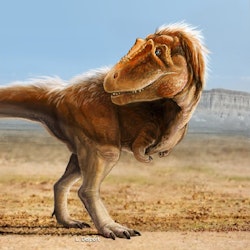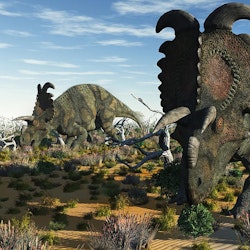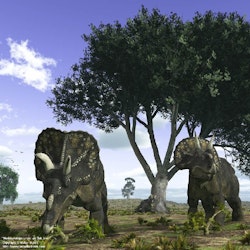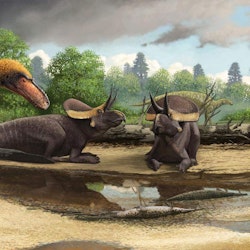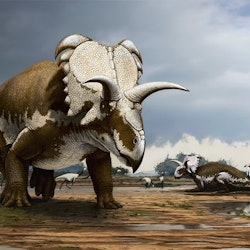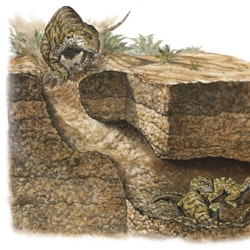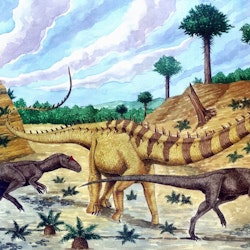Want to see other dinosaurs besides the ones from North America? See all dinosaurs.
Search: or pick one for me
England had the Allosaur, and New Jersey wasn't far behind in the dinosaur stakes, with the discovery of the duck-billed Hadrosaur in 1838. It became the first mounted partial skeleton. But that was early days, before 19th century scientists began harvesting fossil remains from the Wild West. The Morrison Formation consists mainly of late Jurassic strata that crop up from New Mexico to Oklahoma, and it has produced an unequalled harvest for palaeontologists.
Mounted sauropod trophies from the Morrison Formation include such small-brained, long-tailed giants as Brachiosaurus and Diplodocus. The first Stegosaurs also came from the fossil treasure house of the American West, and they gave way to sturdy Ankylosaurs. As far as Cretaceous fossil beds are concerned, North America is still the world capital of dinosaur fossils, and many of them have been widely popularised. Today, most kids can identify a stegosaurus, triceratops or T. Rex from toyshop models.
In 2016 the Royal Canadian Mint offered a $20 silver coin with a Tyrannosaurus on it, to commemorate a T. Rex discovery. A fascinating clutch of Hadrosaur eggs turned up in Alberta, as did the duck-billed Edmontosaurus. And in 2011, miners found the front half of a Nodosaur, with fully preserved impressions of skin and scales. In Mexico, exploration has been limited and fossil specimens are few.
